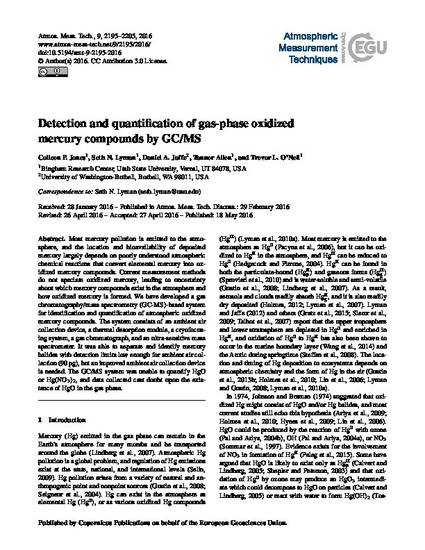
Most mercury pollution is emitted to the atmosphere, and the location and bioavailability of deposited mercury largely depends on poorly understood atmospheric chemical reactions that convert elemental mercury into oxidized mercury compounds. Current measurement methods do not speciate oxidized mercury, leading to uncertainty about which mercury compounds exist in the atmosphere and how oxidized mercury is formed. We have developed a gas chromatography/mass spectrometry (GC-MS)-based system for identification and quantification of atmospheric oxidized mercury compounds. The system consists of an ambient air collection device, a thermal desorption module, a cryofocusing system, a gas chromatograph, and an ultra-sensitive mass spectrometer. It was able to separate and identify mercury halides with detection limits low enough for ambient air collection (90 pg), but an improved ambient air collection device is needed. The GC/MS system was unable to quantify HgO or Hg(NO3)2, and data collected cast doubt upon the existence of HgO in the gas phase.
Available at: http://works.bepress.com/seth-lyman/10/
